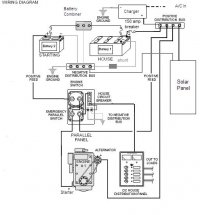Rocinante33
Contributing Partner
Has anyone converted their ammeter to a shunt type? I am in the middle of upgrading my alternator (and its bracket) on my M25. It seems that a shunt type ammeter would be far superior with one of the alternatives;
1. a long run of wire up to the instrument panel & back with the ammeter in series (the stock system), or
2. direct , short, heavy wire from the alt. to the solenoid, and the loss of the info about the charge rate via the ammeter.
This second option is ala the Tom Metzger owner's project. I have already made this change prior to my current alternator upgrade. I seems to me that adding a shunt ammeter from the alt. in parallel to the load would get my charge rate information back for me. It allows the use of small gauge wire up to the instrument panel.
I like option 2 with the shunt ammeter. Any thoughts on this idea?
Thanks,
Keith
E33
1. a long run of wire up to the instrument panel & back with the ammeter in series (the stock system), or
2. direct , short, heavy wire from the alt. to the solenoid, and the loss of the info about the charge rate via the ammeter.
This second option is ala the Tom Metzger owner's project. I have already made this change prior to my current alternator upgrade. I seems to me that adding a shunt ammeter from the alt. in parallel to the load would get my charge rate information back for me. It allows the use of small gauge wire up to the instrument panel.
I like option 2 with the shunt ammeter. Any thoughts on this idea?
Thanks,
Keith
E33



